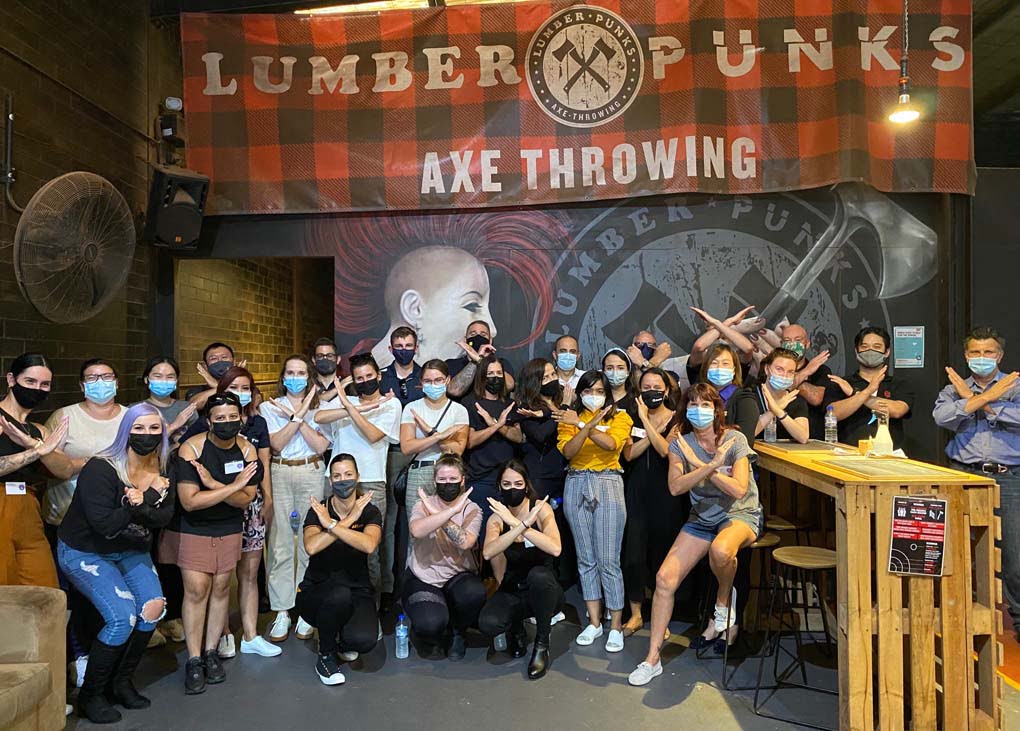To mark International Women’s Day (IWD) and its theme for 2022, AIRAH has launched a survey to collect and share experiences of gender in Australia’s HVAC&R building services sector, and identify ways to “break the bias”.
Sharing experiences
The survey was initiated by the Women of AIRAH special technical group (STG). Ura Sarfejoo, M.AIRAH, is Associate Director of the STG, and Pacific Leader, Integrated Technologies – Digital Solutions, Sustainability & PI at Johnson Controls, and says that the impetus for the project came from experiencing gender bias firsthand.
“I was driving back from a customer meeting with my boss,” remembers Sarfejoo. “He decided to call his wife at home.
“He said to her: ‘[Ura] wishes she could stay at home like you and look after her kids.’ Then he turned to me and continued, ‘I feel sorry for your children’.
“I felt belittled. He was partly right; I would feel sorry for my children – but only if I had continued working for a man that didn’t respect their mother. So, I left that job the first opportunity that I got.”
Business Manager at About Airconditioning and fellow member of the Women of AIRAH STG, Jenny Smith, Affil.AIRAH, also has direct experience with gender bias in the industry.
“As the first female refrigeration and air conditioning technician for the federal government, I will always remember the day I had an after-hours breakdown on the RAAF base,” says Smith.
“I was working in the plant room when a high-ranking officer came in and asked, ‘Where’s your dad?’
“I looked at him smiling, and told him my dad couldn’t help him – but I could. He was embarrassed, and 10 minutes later the system was up and running.”
Another female HVAC&R technician, Jessica Lonsdale, Stud.AIRAH, who won the AIRAH Student of the Year – Trade award in 2021, notes that bias can take more positive forms, and that the industry understands the need for change.
“Everyone I’ve been working with, they’ve all been supportive, helpful,” she says. “Even these guys who have been doing it for 20–30 years, they’re really excited to see females getting in there. Everyone’s been very welcoming.”
Breaking the bias
As well as highlighting bias in the industry, IWD 2022 is encouraging conversations about how to change the status quo.
“Knowing that bias exists isn’t enough,” says the official site, “action is needed to level the playing field.”
Accordingly, an important part of the 2022 theme – and the AIRAH survey – is to share ideas for breaking the bias, and highlighting actions.
Louise Monger, Vice President, Digital Buildings at Schneider Electric, believes bias is broken “one conversation at a time”.
“If I see bias influencing a decision or decision-making,” says Monger, “I try to call it out in the moment, or have a conversation with the person quickly after.
“Often bias is unconscious for people, so raising their awareness through open dialogue is a quick and effective way to handle it.”
More structured initiatives are also under way to break the bias in HVAC&R – one of the most male-dominated industries in Australia. This is particularly true for trades workers. According to the federal government’s Job Outlook site, only 1 per cent of refrigeration and air conditioning mechanics are female.
Recently, TAFE NSW Ultimo refrigeration section sought female participation in a Certificate II Electrotechnology Career Start course. The first two candidates to complete the program were proud Turrubul/Bundjalung woman Lena Gill, and proud Nyawagi woman, Shivanhi Nair.
Grant Swanson, M.AIRAH, Head Teacher – HVAC and Refrigeration, says that although the roles of women in the workforce have changed dramatically over the past 50 years, the same cannot be said about construction and building services.
“Partly that’s due to bias that this work is not suited to women as it is too physically demanding,” says Swanson. “Partly it’s due to issues around maternity leave. Others feel it is not a conducive environment for women to work in.”
But Swanson says most of these are now non-issues, and the need to break the bias has never been more urgent.
“Due to WHS changes and improved lifting equipment, heavy lifting for both men and women is far less frequent, and due to the high cost of labour, physically demanding tasks are being automated,” says Swanson. “Many women in this day and age return to work after having children, and many men take paternity leave.
“The HVAC&R industry has been short on quality skills for many years, mainly due to a small talent pool to draw from at the commencement of the trades. The industry needs to be selecting talented candidates from both genders to obtain the number required to ease the pressure of the skill shortage.”
Swanson says that the number of female refrigeration and air conditioning apprentices continues to grow, but at a very slow rate.
“Until we get a larger number of female tradies out in the industry, attitudes and site environments won’t change. I’m not a great fan of more government regulation, but we may need higher government incentives for employers to engage females or some form of quota on government contracts.”
AIRAH’s #Breakthebias survey is open now. Respondents may share their experiences anonymously, and regardless of gender.
To complete the survey, click here.
Image from Women of AIRAH axe throwing event in Perth, WA, for International Women’s Day.
 Mark Vender
Mark Vender


Leave a Reply